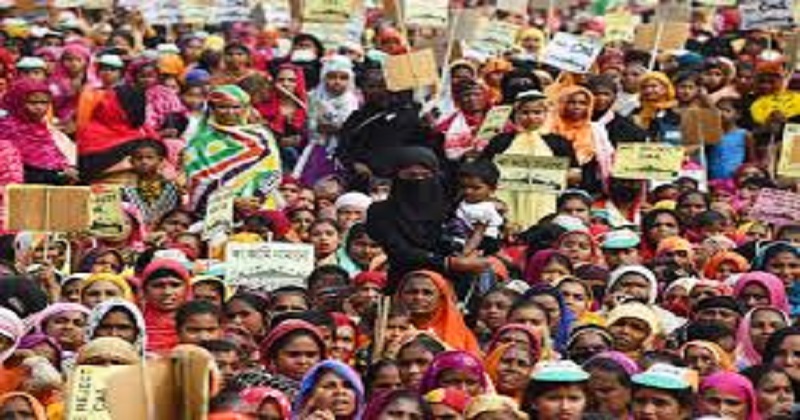
Muslim populations in India are growing ‘somewhat faster’ than other religious groups due to fertility differences, however, and there have been only ‘modest changes’ to the overall religious makeup of the nation since 1951, when the world’s first post-Independence census was conducted. Pew Research Center published an analysis on Tuesday based on its findings. A study entitled ‘Religious Composition of India’ aims to study India’s religious demography over time, and describes fertility as ‘by far the biggest driver of the modest amount of religious change since Partition’.
A decline in fertility patterns and convergence of fertility patterns are attributed to the ‘modest’ changes. ‘In India, every religious group has experienced a decline in fertility, including the majority Hindu population and the Muslim, Christian, Sikh, Buddhist, and Jain minority groups’, the report states. The Muslim fertility rate is the highest of India’s major religions, but the total fertility rate of Muslims has dipped dramatically over the last decade.

The report notes that there are usually three factors that cause religious groups to shrink or expand – migration, religious conversion and fertility – before explaining why fertility explains the trends in India. Reports reveal that migrants leave India more than immigrants and that minorities leave more than Hindus. Furthermore, religious conversion had only a ‘relatively small impact’ on India’s overall composition, with 98 percent of Indians identifying with the religion in which they were raised.
The 2011 census data support what the report means by ‘modest changes’. Hindus have seen a ‘modest decline’ in their share of the population, and Muslims have seen a ‘modest rise’. According to the government, in 1951, Hindus constituted 84.1% of the population, and in 2011, 79.8% of the population, while Muslims constituted 9.8% and 14.2%, respectively. Lead researcher Stephanie Kramer stated, ‘As far as we know, this is the first time researchers have quantified fertility rates, migration, and conversion to compare their potential impacts on demographic change in India side by side’.

On fertility rates
The report found that gaps in fertility rates between India’s religious groups have shrunk over the years. Fertility rate refers to the average number of children born to a woman in childbearing age (15-44 years). While Muslim women were expected to have an average of 1.1 more children than Hindu women in 1992, the gap had shrunk to 0.5 by 2015, the report says. Using a statistical technique known as multilevel mixed-effects analysis, the report tries to see if education, wealth and place of residence played a role in these gaps, Kramer said.
If all the women were the same age, wealth, and education, and lived in the same places, the report found that Hindu women would have on average 0.9 fewer children than their Muslim counterparts. Between 1992 and 2015, all religious groups showed a major decline in fertility rates. Muslim women have the highest fertility rate, followed by Hindu women. According to the report, this pattern has existed since 1992.
Read more: Save the Earth by washing your jeans once a month: Experts advise
‘Christians might be undercounted’
The study notes that India’s population has more than tripled since Partition, so all religious groups have grown in size. Indians ‘who say they are Christian’ increased to 2.8 crores from 0.8 crores, but the report notes that this could be an undercount. People who identify as Christian on the census cannot also identify as belonging to the Scheduled Castes. Government benefits are available to Scheduled Castes members, prompting some to identify as Hindu when filing official government forms, states the study.
Christian and Muslim Dalits are ineligible for reservation benefits and remain excluded from the 1951 Constitution (Scheduled Castes) Order. Indians expressed enthusiasm for religious tolerance in a survey released by Pew Research Center in late June. However, they prefer to stay within their own communities or marry within them. Several political scientists, academics and ethnographers were critical of the study, with some saying that it was ‘too good to be true’, and that caste and class should also have been taken into account as larger factors.

Post Your Comments